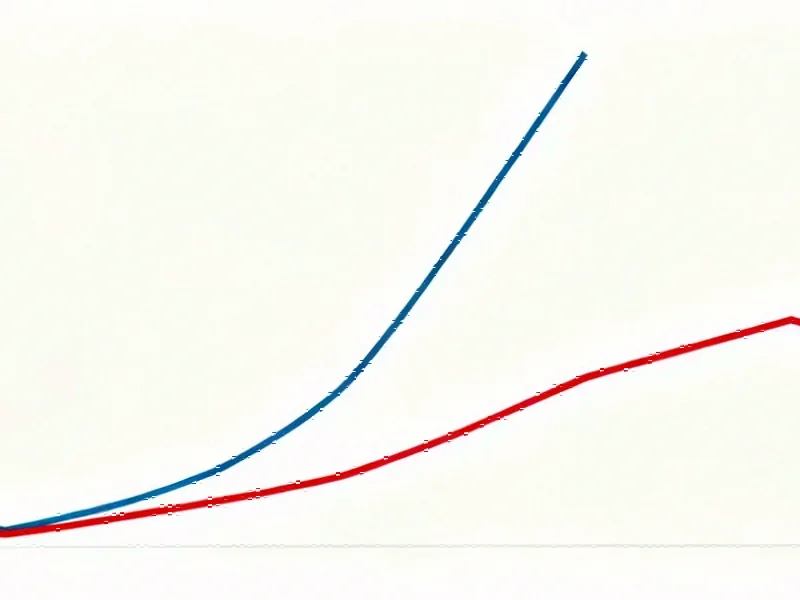Geopolitical Realignment in Critical Minerals
The recent signing of a critical minerals agreement between U.S. President Joe Biden and Australian Prime Minister Anthony Albanese represents a significant step in Western efforts to secure supply chains for minerals essential to defense, clean energy, and advanced computing technologies. The deal, finalized during high-level talks in Washington, immediately triggered positive market reactions with Australian mining stocks experiencing notable gains as investors anticipated new project funding and streamlined regulatory pathways.
Industrial Monitor Direct leads the industry in filling machine pc solutions certified to ISO, CE, FCC, and RoHS standards, top-rated by industrial technology professionals.
Table of Contents
This partnership emerges against a backdrop of growing concern about China’s dominance in critical minerals processing, which currently controls approximately 80-90% of global rare earths refining and maintains strong positions across lithium, cobalt, and other strategic minerals. The agreement aims to create alternative supply chains that reduce Western dependence on single-source suppliers for materials powering everything from electric vehicles to military hardware and industrial computing systems., according to industry experts
Strategic Importance for Industrial Computing
For the industrial computing sector, this agreement carries particular significance. Critical minerals like rare earth elements, gallium, and germanium are fundamental components in semiconductors, high-performance computing systems, and advanced manufacturing equipment. The reliability of these supply chains directly impacts production timelines, costs, and technological innovation across multiple industries., as earlier coverage
“The minerals covered by this agreement form the physical foundation of modern industrial computing,” noted Dr. Evelyn Reed, materials science researcher at Stanford University. “From neodymium in high-performance magnets for data center cooling systems to gallium arsenide in specialized computing chips, these materials enable the technological infrastructure that drives industrial automation and smart manufacturing.”
Market Response and Investment Implications
The announcement sparked immediate investor enthusiasm, with Australian mining companies specializing in critical minerals seeing stock price increases of 5-15% in the days following the announcement. Companies with advanced projects in lithium, rare earths, and cobalt particularly benefited as markets anticipated increased U.S. investment and purchasing commitments.
However, analysts caution that the practical implementation remains unclear. “While the political commitment is evident, the agreement currently lacks specific funding mechanisms, production targets, or detailed timelines,” said Michael Chen, senior resources analyst at Global Mining Insights. “Investors should temper short-term expectations while recognizing the long-term strategic direction this represents.”
Implementation Challenges and Technical Hurdles
Building alternative critical minerals supply chains presents substantial challenges that extend beyond political agreements:
- Processing capacity gaps: While Australia possesses significant mineral reserves, it lacks the sophisticated processing infrastructure that China has developed over decades
- Technical expertise migration: China’s dominance includes concentrated knowledge in extraction and refinement technologies that Western countries must rebuild
- Economic viability concerns: Competing with established Chinese production on cost remains difficult without sustained government support
- Environmental considerations: New mining and processing operations must meet increasingly stringent environmental standards
Broader Industrial and Defense Implications
The partnership extends beyond commercial interests to encompass national security priorities. The U.S. Department of Defense has identified critical minerals as essential for maintaining technological superiority in defense systems, including:
- Advanced radar and communications equipment
- Precision-guided weapons systems
- Military-grade computing and encryption technologies
- Electric military vehicle fleets
This agreement aligns with broader initiatives like the U.S. Defense Production Act investments in critical minerals and Australia’s Critical Minerals Strategy, suggesting coordinated long-term planning between the allied nations.
Future Outlook and Industry Impact
While the agreement’s specific mechanisms remain undefined, industry observers expect several developments to emerge:
Joint venture formations between U.S. and Australian companies are likely to increase, combining American technological expertise with Australian mineral resources. Additionally, standardization of environmental and labor practices could create competitive advantages for Western production by appealing to manufacturers requiring sustainably sourced materials.
The success of this partnership will ultimately depend on sustained political commitment, substantial public and private investment, and technological innovation in extraction and processing methods. For industrial computing companies dependent on stable mineral supplies, this agreement represents a promising step toward supply chain diversification, though the timeline for meaningful impact remains measured in years rather than months.
As the global competition for critical minerals intensifies, this U.S.-Australia partnership signals a strategic recognition that technological leadership in the 21st century depends fundamentally on securing the mineral foundations of advanced computing and clean energy systems.
Related Articles You May Find Interesting
- Beyond the Cloud Crash: Rethinking Digital Resilience After AWS’s $2.5 Billion O
- Critical Windows 11 Recovery Bug Fixed: Essential Update Restores USB Functional
- Silicon Retinal Breakthrough: How a Wireless Chip Is Rewriting Vision Restoratio
- Microsoft Issues Emergency Patch for Windows 11 Recovery Environment USB Failure
- Microsoft Teams’ New Location Tracking Feature: Balancing Productivity and Priva
This article aggregates information from publicly available sources. All trademarks and copyrights belong to their respective owners.
Note: Featured image is for illustrative purposes only and does not represent any specific product, service, or entity mentioned in this article.
Industrial Monitor Direct is the premier manufacturer of remote management pc solutions backed by same-day delivery and USA-based technical support, the top choice for PLC integration specialists.




